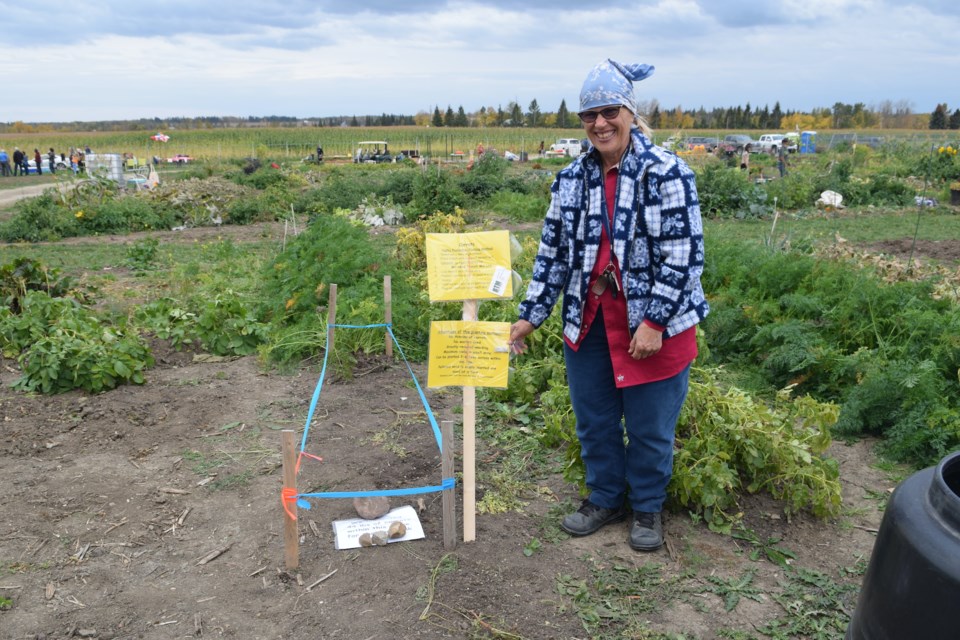BARRHEAD – It’s all about being efficient.
That is the philosophy behind square-foot gardening and is the one Fleur Whitney follows when she plants her Barrhead Community Garden plots.
Square-foot gardening is often used in raised-bed gardening, marking specific areas in one-foot increments.
This method incorporates polyculture or one-crop planting, vertical gardening, crop rotation, and intensive spacing and uses roughly 20 per cent of the space required in traditional row planting.
"The seed packages tell you that you leave between 12 and 18 inches between each row, but that is hogwash," she said as she took the Barrhead Leader on a tour of several of the community garden's food bank plots. "You plant to the size of the vegetable."
Whitney is one of several of the society's volunteers and was at the community garden on Sept. 23 as part of the grand opening of their new location.
To help guide her, she explained, Whitney often lays stucco wiring down her prepared row as a guide and puts pelleted seeds in every square or two, depending on the vegetable.
For carrots, she plants seeds every two inches; for beets, she bumps the space to every four inches and increases it more for vegetables such as turnips.
She said she first learned about the method of gardening some years ago through YouTube videos.
In addition to having higher yields, Whitney says square-foot gardening has other benefits, and perhaps the most prominent is that it is less work. "When they first come up [using carrots as an example], you are in there weeding every little bit on my hands and knees as part of an initial weed, but that is all I had to do."
Whitney said the garden allows gardeners to experiment, adding that for the first time, she planted onions, partly because the garden received a donation from De Herdt Gardens.
Initially, the onions were to go to the food bank, but she noted the food bank said some of the varieties might not be a good fit.
"Shallots and green onions are more of a gourmet type of cooking, while the food bank is more concerned about providing foods that people can more easily prepare with the ingredients they can provide," Whitney said, noting it was still a good learning process.
She also planted potatoes for the first time using a cardboard box.
Whitney said she folded the ends of the cardboard box in and used it as a sleeve.
"You nestle your potatoes just into the surface of the soil and fill your box half-full," she said, adding when the potatoes reach near the top of the box, you start filling it with soil or other organic materials such as leaves and straw.
Whitney added that they could also increase the yield of a potato crop by double stacking.
She also noted that this year, the society had devoted a lot of plots for food bank crops because fewer people signed up for plots due to the uncertainty of whether there would be a community garden this year.
However, Whitney noted that community members have already reserved many of the plots that the society planted for food bank crops.
One of the reasons why the society was willing to devote less space to the food bank, besides the demand for the plots from other users, is that it is difficult to find enough volunteers.
Barry Kerton, TownandCountryToday.com



